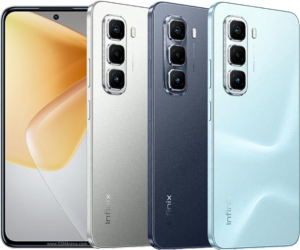Apple officially unveiled the new iPhone 16e on its website, priced from 4,499 yuan In China

Image source: Apple official website
As Apple’s first product with an “e” suffix, the company seems eager to set this model apart from its previous “budget iPhone” lineup, such as the SE series.
However, when looking at its hardware, it’s hard not to see it as another budget-friendly option. The iPhone 16e features a downgraded GPU, a single-camera design, the return of the notch, the absence of MagSafe, and a price point that, for many Chinese consumers, doesn’t seem cost-effective. With widespread “national subsidies,” the iPhone 16 on various e-commerce platforms is only about 200 yuan more expensive than the newly released iPhone 16e.
For Apple, though, the 16e might represent a pivotal moment. As “AI smartphones” are still in their early stages, this model extends Apple’s intelligent ecosystem while debuting its self-developed baseband, signaling a move away from external suppliers. Apple may indeed need this “affordable iPhone” to push forward its strategic goals.
01 Is Apple’s strategy still sharp?
The iPhone 16e is priced 1,500 yuan less than the iPhone 16, and its hardware reflects this gap. The device uses the same A18 chip as the iPhone 16/16 Plus but with one less GPU core. For most users, this difference will be negligible, except in performance-heavy scenarios like gaming.
However, one odd choice stands out: on its official website, Apple compares the iPhone 16e to the iPhone 11 from 2019. With the A18 chip earning praise, was it really necessary to use a four-year-old device to highlight performance improvements? This decision raises questions about how Apple wants to position the 16e in its lineup.

When it comes to imaging, the iPhone 16e has seen significant downgrades. The ultra-wide-angle secondary camera has been replaced with what Apple calls a “fusion camera,” essentially a single camera. Despite this reduction, Apple’s software optimization ensures the iPhone 16e delivers acceptable photo quality.
In terms of design, the iPhone 16e ditches the outdated Home button seen on the iPhone SE 3, signaling its complete phase-out. However, it reintroduces the notch screen from pre-iPhone 14 models, meaning features linked to the Dynamic Island will not be available. Other hardware features have also been scaled back, such as the downgrade from WiFi 7 to WiFi 6 and the removal of MagSafe, the ultra-wideband chip, and the “camera control” button.
Even so, these compromises don’t significantly impact the overall user experience, reflecting Apple’s typical approach to trimming features strategically.
When it comes to sales, the outlook for the iPhone 16e in China seems bleak without subsidies or major promotions. With only a 200-yuan price difference from the base iPhone 16 model, it lacks competitiveness. However, based on previous trends, prices could drop by 800–1,000 yuan after four months, boosted by national subsidies, potentially sparking a surge in sales.
Apple’s performance in China last year was underwhelming. According to Canalys, its shipments in mainland China dropped by 17% in 2024, totaling 42.9 million units and falling to third in market share rankings. Much of this decline was attributed to the lackluster performance of the iPhone 16 series, which, after an initial sales spike, saw a 25% year-on-year drop in Q4. The core issue? A focus on AI features that Chinese consumers couldn’t fully experience.
With the launch of the iPhone 16e and Apple’s localized AI solutions, this may soon change.
The Role of the “Affordable iPhone”
There has long been debate around Apple’s “affordable iPhone” strategy. Do they really need one? Historically, budget-friendly iPhones like the SE series have contributed little to Apple’s revenue. In 2024, the iPhone SE (3rd generation) accounted for just 1% of total iPhone sales, according to Counterpoint Research. Even at its peak in 2016, the SE series only accounted for 10% of sales.
So why does Apple persist in maintaining a product line with low profitability and limited market share? Because the “affordable iPhone” serves as a gateway.
In the past, the iPhone SE attracted new users to the Apple ecosystem at a lower cost, offering access to services like iCloud. Now, the iPhone 16e plays a similar role, but Apple’s focus has shifted to showcasing its AI capabilities.
On the iPhone 16e, many features have been stripped back, but Apple has ensured its AI functionality remains intact. For example, while the “camera control” button has been removed, AI functionality has been integrated into a customizable “action button,” which activates features like “Visual Intelligence.”
The iPhone 16e may not be revolutionary, but it represents Apple’s strategic push to bring its AI capabilities to a broader audience while maintaining the core essence of its ecosystem.

Apple is bringing several AI-powered features to the iPhone 16e, including auxiliary writing, notification summaries, ChatGPT search, image generation, and Image Playground. However, these features are yet to be fully implemented on the device.
Reports suggest that Apple will roll out its Apple Intelligence system in multiple languages, including Simplified Chinese, with a version update expected this April.
Last week, Alibaba Chairman Tsai Chongxin confirmed a partnership between Alibaba and Apple. In China, Apple’s AI strategy faces two main challenges: the need for a strong localized software ecosystem and ensuring data compliance. The collaboration with Alibaba is expected to address these issues effectively, leveraging domestic cloud service providers to meet regulatory requirements.
Globally, the iPhone 16 series has seen strong performance, with shipments of 77.1 million units in Q4 last year, according to Omdia. This surpasses the iPhone 15’s numbers for the same period and continues Apple’s trend of strong post-launch sales. The upcoming multilingual Apple Intelligence update and the more affordable iPhone 16e are expected to further boost iPhone sales in Q2 this year.
One major highlight of the iPhone 16e is its use of Apple’s first self-developed 5G modem. This marks a significant milestone, as it eliminates Apple’s reliance on third-party baseband suppliers and strengthens its position in the smartphone market.

As early as 2017, Apple began exploring the development of its own baseband chips. The move stemmed from dissatisfaction with Qualcomm’s patent fees, leading Apple to shift to Intel’s baseband technology. This decision, however, sparked a legal battle with Qualcomm, which accused Apple of violating their exclusive supply agreement. After two years of disputes, Apple resolved the issue with a settlement exceeding $4.5 billion.
Following this, Apple ramped up its investment in baseband chip development, assembling a team of over 2,000 engineers. However, the transition to 5G posed significant challenges. Qualcomm’s technological edge in the 5G era became undeniable, leaving Apple with little choice but to rely on Qualcomm as its primary supplier after 2020.
While Apple has achieved impressive advancements in chip design, the baseband sector presents unique difficulties. Qualcomm’s dominance in the field, backed by an extensive patent portfolio—famously displayed on its “patent wall” at its San Diego headquarters—has forced Apple to seek alternative approaches to industry-standard solutions. These patent constraints delayed Apple’s planned launch of its first 5G baseband, originally set for 2022.
In early 2023, Apple announced a significant expansion of its silicon design center in Munich, accompanied by a €1 billion investment to accelerate 5G baseband development.
This year, Apple finally unveiled its self-developed baseband chip, the C1.
According to Apple, the C1 is the “most efficient baseband module for iPhone.” However, due to Qualcomm’s control over millimeter wave patents, the upcoming iPhone 16e will likely support only the Sub-6GHz band, limiting its transmission speeds compared to Qualcomm’s solutions.
Despite this limitation, the C1 represents a critical milestone for Apple, marking the first step toward self-sufficiency in baseband technology. With its expertise in chip design, Apple is expected to make significant progress and potentially rival Qualcomm through future iterations.
It’s worth noting that under Apple’s current agreement with Qualcomm, Qualcomm will continue to supply baseband chips until 2026. By the time the iPhone 18 series launches, Apple is expected to fully break free from its reliance on Qualcomm, finally overcoming the “Sword of Damocles” that has loomed over its operations.

Kazam is Focused on creating and reporting timely content in technology with a special focus on mobile phone technology. Kazam reports, analyzes, and reviews recent trends, news and rumors in mobile phone technology and provides the best possible insights to enhance your experience and knowledge.













